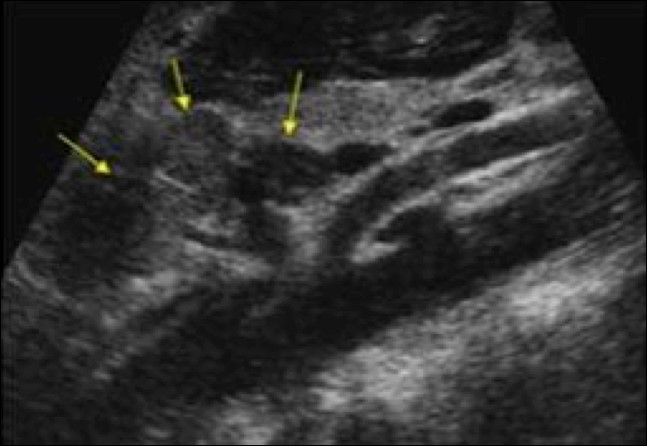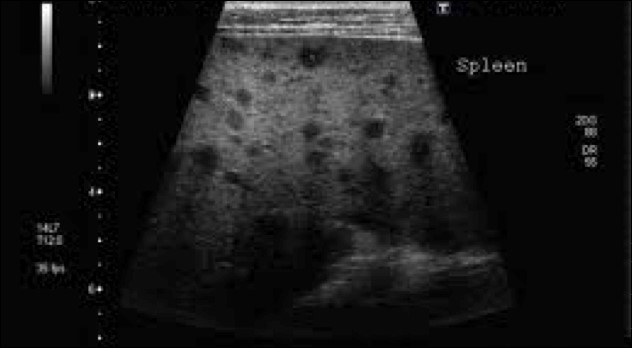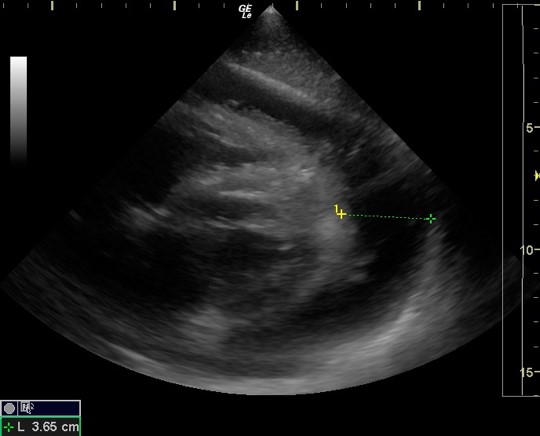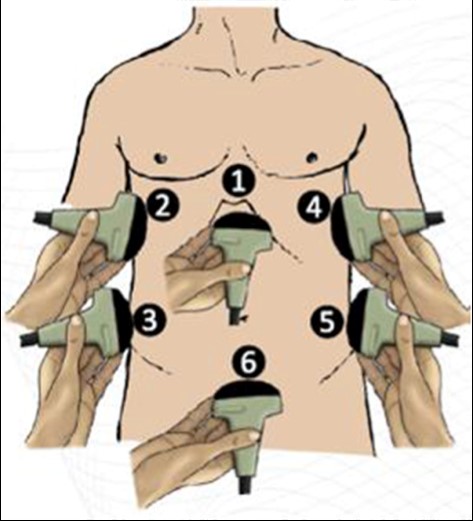Category: International EM
Keywords: Influenza, southern hemisphere (PubMed Search)
Posted: 10/4/2017 by Jon Mark Hirshon, PhD, MPH, MD
Click here to contact Jon Mark Hirshon, PhD, MPH, MD
The current number of influenza cases in the Southern Hemisphere is substantially higher than normal. For example, in Australia the number of influenza cases this year are twice the next highest year. 
Have you gotten your flu shot yet?
http://www.health.gov.au/internet/main/publishing.nsf/Content/cda-surveil-ozflu-flucurr.htm/$File/ozflu-surveil-no09-2017.pdf
Category: International EM
Keywords: Octopus, tetrodotoxin (PubMed Search)
Posted: 9/20/2017 by Jon Mark Hirshon, PhD, MPH, MD
Click here to contact Jon Mark Hirshon, PhD, MPH, MD
The blue-ringed octopus (genus Hapalochlaena) is normally found in the Great Barrier Reef and other coastal waters and tide pools around Australia and other Western Pacific islands. Though not an aggressive animal, when it does bite, such as stepped upon, it can inject tetrodotoxin along with a number of other toxic compounds.
Tetrodotoxin can cause paralysis, leading to respiratory failure and death, though the blockage of voltage-gated fast sodium channel conduction, blocking peripheral nerve conduction. Treatment is supportive, as the venom usually wears off within 4 to 10 hours.
http://emedicine.medscape.com/article/771002-treatment#d10
Category: International EM
Keywords: Floods, earthquakes, hurricanes, natural disasters (PubMed Search)
Posted: 9/6/2017 by Jon Mark Hirshon, PhD, MPH, MD
(Updated: 12/5/2025)
Click here to contact Jon Mark Hirshon, PhD, MPH, MD
With the recent destruction by Hurricane Harvey and the impending impact of Hurricane Irma, it is important to recognize the historical death toll from natural disasters. While the list can vary, here is a top ten list from the library of the National Oceanic and Atmospheric Administration:
| Rank | Event | Location | Date | Death Toll (Estimate) |
| 1 | 1931 Yellow River flood | Yellow River, China | Summer 1931 | 850,000-4,000,000 |
| 2 | 1887 Yellow River flood | Yellow River, China | September-October 1887 | 900,000-2,000,000 |
| 3 | 1970 Bhola cyclone | Ganges Delta, East Pakistan | November 13, 1970 | 500,000- 1,000,000 |
| 4 | 1201 Earthquake | Eastern Mediterranean | 1201 | 1,000,000 |
| 5 | 1938 Yellow River flood | Yellow River, China | June 9th, 1938 | 500,000 - 900,000 |
| 6 | Shaanxi Earthquake | Shaanxi Province, China | January 23, 1556 | 830,000 |
| 7 | 2004 Indian Ocean earthquake/tsunami | Indian Ocean | December 26, 2004 | 225,000-275,000 |
| 8 | 1881 Haiphong Cyclone | Haiphong, Vietnam | 1881 | 300,000 |
| 9 | 1642 Kaifeng Flood | Kaifeng, Henan Province, China | 1642 | 300,000 |
| 10 | Tangshan Earthquake | Tangshan, China | July 28, 1976 | 242,000* |
* Official Government figure. Estimated death toll as high as 655,000.
https://docs.lib.noaa.gov/noaa_documents/NOAA_related_docs/death_toll_natural_disasters.pdf
Category: International EM
Keywords: suicide, clinical policies, risk-assessment tools (PubMed Search)
Posted: 8/11/2017 by Jon Mark Hirshon, PhD, MPH, MD
(Updated: 8/16/2017)
Click here to contact Jon Mark Hirshon, PhD, MPH, MD
In patients presenting to the ED with suicidal ideation, physicians should not use currently available risk-assessment tools in isolation to identify low-risk patients who are safe for discharge. The best approach to determine risk is an appropriate psychiatric assessment and good clinical judgment, taking patient, family, and community factors into account. (Level C Recommendation, based upon the quality of the research.)
As noted in a previous Pearl (see August 2, 2017), the American College of Emergency Physicians recently published a methodological rigorous clinical policy entitled “Critical Issues in the Diagnosis and Management of the Adult Psychiatric Patient in the Emergency Department.”
Another question addressed within the document was the following: “In the adult patient presenting to the ED with suicidal ideation, can risk-assessment tools in the ED identify those who are safe for discharge?”
They determined that in patients presenting to the ED with suicidal ideation, physicians should not use currently available risk-assessment tools in isolation to identify low-risk patients who are safe for discharge. The best approach to determine risk is an appropriate psychiatric assessment and good clinical judgment, taking patient, family, and community factors into account. (Level C Recommendation, based upon the quality of the research.)
http://www.annemergmed.com/article/S0196-0644(17)30070-7/fulltext
Category: International EM
Keywords: Mental health, routine laboratory test, acute psychiatric patient (PubMed Search)
Posted: 8/2/2017 by Jon Mark Hirshon, PhD, MPH, MD
Click here to contact Jon Mark Hirshon, PhD, MPH, MD
Patients with psychiatric disorders are found globally, with a recent global burden of disease estimate that mental illness accounted for 32.4% of years lived with disability and 13.0% of disability-adjusted life-years.
The American College of Emergency Physicians just published a methodological rigorous clinical policy entitled “Critical Issues in the Diagnosis and Management of the Adult Psychiatric Patient in the Emergency Department.”
One question they sought to answer was “In the alert adult patient presenting to the ED with acute psychiatric symptoms, should routine laboratory tests be used to identify contributory medical conditions (nonpsychiatric disorders)?”
Their assessment was: “Do not routinely order laboratory testing on patients with acute psychiatric symptoms. Use medical history, previous psychiatric diagnoses, and physician examination to guide testing.” This was a Level C recommendation, based upon the quality of the research.
Bottom Line: Current literature does not support routinely ordering laboratory testing on patients with acute psychiatric symptoms. However, the quality of the evidence was not strong and local clinical context should be considered.
http://www.thelancet.com/journals/lanpsy/article/PIIS2215-0366(15)00505-2/abstractege of
http://www.annemergmed.com/article/S0196-0644(17)30070-7/fulltext
Category: International EM
Keywords: Cholera, conflict, children (PubMed Search)
Posted: 7/5/2017 by Jon Mark Hirshon, PhD, MPH, MD
(Updated: 12/5/2025)
Click here to contact Jon Mark Hirshon, PhD, MPH, MD
Cholera is an acute diarrheal disease that can kill within hours if left untreated.
Rising cholera, diarrhea and malnutrition is a deadly combination in war torn countries, such as Yemen, South Sudan, Somalia and Sudan, especially for children.
Yemen currently has the worst outbreak globally, with over 260,000 suspected cases and over 1,600 deaths. In Yemen:
o Half the suspected cases are children
o A quarter of the deaths are among children
Bottom Line:
Cholera remains a major cause of morbidity and mortality globally, especially in areas of conflict.
http://www.who.int/mediacentre/factsheets/fs107/en/
http://www.un.org/apps/news/story.asp?NewsID=57114#.WV2aQ9Pyu9Y
Category: International EM
Keywords: Anticholinergic, Beers Criteria, mushrooms (PubMed Search)
Posted: 6/7/2017 by Jon Mark Hirshon, PhD, MPH, MD
Click here to contact Jon Mark Hirshon, PhD, MPH, MD
A patient presents with altered mental status for unclear reasons- could it be anticholinergic syndrome?
There are many medications (e.g. Beers Criteria, see pearl from March 5, 2017) and plants (e.g.: certain mushrooms) that can cause this life-threatening toxidrome.
The quick mnemonic for anticholinergic poisoning is:
· Hot as a hare (hyperthermia)
· Red as a beet (flushed)
· Cry as a bone (decreased secretions)
· Blind as a bat (mydriasis)
· Mad as a hatter (delirium)
· Full as a flask (urinary retention)
Bottom line: Keep anticholinergic syndrome within your differential for a patient with altered mental status without a clear cause.
Note: An earlier version of this pearl incorrectly listed organophospahtes, which cause cholingeric toxicity.
The clinical manifestations of anticholinergic syndrome can be extensive. Additional symptoms can include:
· “Sinus tachycardia
· Decreased bowel sounds
· Functional ileus
· Urinary retention
· Hypertension
· Tremulousness
· Myoclonic jerking
Patients with central anticholinergic syndrome may present with the following:
· Ataxia
· Disorientation
· Short-term memory loss
· Confusion
· Hallucinations (visual, auditory)
· Psychosis
· Agitated delirium
· Seizures (rare)
· Coma
· Respiratory failure
· Cardiovascular collapse”1
1) http://emedicine.medscape.com/article/812644-overview
2) http://www.uptodate.com/contents/anticholinergic-poisoning
Category: International EM
Keywords: Tranexamic acid, Post-Partum Hemorrhage (PubMed Search)
Posted: 5/31/2017 by Jon Mark Hirshon, PhD, MPH, MD
Click here to contact Jon Mark Hirshon, PhD, MPH, MD
Post-partum hemorrhage results in approximately 100,000 deaths annually and is the leading cause of maternal death globally.
In a just published study in the Lancet, among approximately 20,000 women from 21 countries enrolled in the WOMAN study, death due to bleeding was significantly reduced in women given tranexamic acid (1.5%) compared to those in the placebo group (1.9%) {RR 0.81, 95% CI 0.65–1.00; p=0.045)}. This was especially true in women given tranexamic acid with 3 hours of giving birth (1·2%) vs in the placebo group (1·7%) {RR 0.69, 95% CI 0.52–0.91; p=0·008)}.
Bottom line:
The authors’ interpretation “Tranexamic acid reduces death due to bleeding in women with post-partum haemorrhage with no adverse effects. When used as a treatment for postpartum haemorrhage, tranexamic acid should be given as soon as possible after bleeding onset.”
http://www.thelancet.com/journals/lancet/article/PIIS0140-6736(17)30638-4/fulltext
Category: International EM
Keywords: Meningitis, infectious disease (PubMed Search)
Posted: 5/18/2017 by Jon Mark Hirshon, PhD, MPH, MD
Click here to contact Jon Mark Hirshon, PhD, MPH, MD
Currently, Nigeria is having the worst outbreak of bacterial meningitis in almost 10 years, involving 23 states, 13,420 suspected cases, and 1,069 deaths, as of May 9.
Bacterial meningitis outbreaks frequently occur in West Africa. The area most frequently struck by epidemics of bacterial meningitis is in the sub-Saharan region of Africa. This includes 26 countries and over 400 million people. Epidemics most often occur in the dry season from December-June. Neisseria meningitides serogroup A historically accounts for approximately 90% of the cases.
The U.S. Centers for Disease Control and Prevention recommends quadrivalent vaccines (protects against four serogroups A, C, W, and Y) for individuals traveling or living in countries in which meningococcal disease is hyperendemic or epidemic.
https://www.osac.gov/pages/ContentReports.aspx?cid=3 (Accessed 5/17/2017)
Category: International EM
Keywords: CDC, Shigella, antibiotic, health advisory (PubMed Search)
Posted: 4/19/2017 by Jon Mark Hirshon, PhD, MPH, MD
(Updated: 12/5/2025)
Click here to contact Jon Mark Hirshon, PhD, MPH, MD
The Centers for Disease Control and Prevention (CDC) just released an official health advisory through the Health Alert Network entitled: “CDC Recommendations for Diagnosing and Managing Shigella Strains with Possible Reduced Susceptibility to Ciprofloxacin”
Concerning treatment, one key point is:
Do not routinely prescribe antibiotic therapy for Shigella infection. Instead, reserve antibiotic therapy for patients for whom it is clinically indicated or when public health officials advise treatment in an outbreak setting.
o Shigellosis is generally a self-limited infection lasting 5-7 days.
o Unnecessary treatment with antibiotics promotes resistance.
o Treatment can shorten the duration of some illnesses, though typically only by 1-2 days
This Health Advisory describes the identification of emerging Shigella strains with elevated minimum inhibitory concentration values for ciprofloxacin and outlines new recommendations for clinical diagnosis, management, and reporting, as well as new recommendations for laboratories and public health officials. There are more details available on the website: https://emergency.cdc.gov/han/han00401.asp
RECOMMENDATIONS FOR CLINICIANS
Diagnosis
· Order stool culture for patients suspected of having a Shigella infection to obtain isolates for antimicrobial susceptibility testing.
· Order antimicrobial susceptibility testing when ordering stool culture for Shigella.
Management
· Do not routinely prescribe antibiotic therapy for Shigella infection. Instead, reserve antibiotic therapy for patients for whom it is clinically indicated or when public health officials advise treatment in an outbreak setting.
· When antibiotic treatment is indicated, tailor antibiotic choice to antimicrobial susceptibility results as soon as possible with special attention given to the MIC for fluoroquinolone antibiotics.
· Obtain follow-up stool cultures in shigellosis patients who have continued or worsening symptoms despite antibiotic therapy.
· Consult your local or state health department for guidance on when patients may return to childcare, school, or work.
· Counsel patients with active diarrhea on how they can prevent spreading the infection to others, regardless of whether antibiotic treatment is prescribed.
https://emergency.cdc.gov/han/han00401.asp
Category: International EM
Keywords: Falls, elderly (PubMed Search)
Posted: 3/29/2017 by Jon Mark Hirshon, PhD, MPH, MD
(Updated: 12/5/2025)
Click here to contact Jon Mark Hirshon, PhD, MPH, MD
· Falls are the second leading cause of accidental or unintentional injury deaths worldwide.
· Each year an estimated 424 000 individuals die from falls globally of which over 80% are in low- and middle-income countries.
· Adults older than 65 suffer the greatest number of fatal falls.
· 37.3 million falls that are severe enough to require medical attention, occur each year.
· Prevention strategies should emphasize education, training, creating safer environments, prioritizing fall-related research and establishing effective policies to reduce risk.
http://www.who.int/mediacentre/factsheets/fs344/en/
Category: International EM
Keywords: Antibiotic resistance, bacterial pathogens (PubMed Search)
Posted: 3/15/2017 by Jon Mark Hirshon, PhD, MPH, MD
Click here to contact Jon Mark Hirshon, PhD, MPH, MD
The World Health Organization (WHO) recently published their first ever list of antibiotic-resistant "priority pathogens". These 12 families of bacterial pathogens have the potential to be a significant threat to human health.
These bacteria are divided in critical, high and medium priority pathogens.
The critical pathogens requiring R & D for new antibiotics are:
1. Acinetobacter baumannii, carbapenem-resistant
2. Pseudomonas aeruginosa, carbapenem-resistant
3. Enterobacteriaceae, carbapenem-resistant, ESBL-producing
http://www.who.int/mediacentre/news/releases/2017/bacteria-antibiotics-needed/en/
Category: International EM
Keywords: Boarding, crowding, patient flow (PubMed Search)
Posted: 3/1/2017 by Jon Mark Hirshon, PhD, MPH, MD
Click here to contact Jon Mark Hirshon, PhD, MPH, MD
Emergency department crowding is an almost universal problem. Whether it is called "access block" (Austalia) or "boarding" (United States), it is seen everywhere.
The American College of Emergency Physicians (ACEP) states that "a “boarded patient” is defined as a patient who remains in the emergency department after the patient has been admitted to the facility, but has not been transferred to an inpatient unit."
It should be clear that the primary cause of overcrowding is boarding: the practice of holding patients in the emergency department after they have been admitted to the hospital, because no inpatient beds are available. This practice has been shown to have an adverse impact on patients, with longer delays causing greater morbidity and mortality.
ACEP has created resources to help address this issue, including an emergency medicine practice paper on high impact solutions. See: file:///Users/jhirshon/Downloads/EMPC_Crowding%20IP_092016%20(1).pdf
https://www.acep.org/Clinical---Practice-Management/Definition-of-Boarded-Patient-2147469010/
https://www.acep.org/content.aspx?id=32050
Category: International EM
Keywords: Zika, arbovirus, pregnancy, congenital (PubMed Search)
Posted: 2/15/2017 by Jon Mark Hirshon, PhD, MPH, MD
(Updated: 12/5/2025)
Click here to contact Jon Mark Hirshon, PhD, MPH, MD
Congenital infection with the Zika virus is associated with 5 types of birth defects
· These are rarely or never seen with other infections during pregnancy
· These defects are:
1. Severe microcephaly (small head size) resulting in a partially collapsed skull
2. Decreased brain tissue with brain damage
3. Damage to the back of the eye with a specific pattern of scarring and increased pigment
4. Limited range of joint motion, such as clubfoot
5. Too much muscle tone restricting body movement soon after birth
https://www.cdc.gov/zika/pregnancy/
Category: International EM
Keywords: Opioids, overdose, injury, death (PubMed Search)
Posted: 1/18/2017 by Jon Mark Hirshon, PhD, MPH, MD
Click here to contact Jon Mark Hirshon, PhD, MPH, MD
· Opioid deaths, such as from heroin and prescription opioids, are a major problem globally
· In the U.S., since 1999 overdose deaths from prescription opioids have quadrupled.
o Almost half of opioid deaths involve a prescription opioid
· The most common drugs related to prescription opioid deaths are:
o Methadone
o Oxycodone
o Hydrocodone
https://www.cdc.gov/drugoverdose/data/overdose.html
Category: International EM
Keywords: B12 deficiency, ataxia, dementia, pernicious anemia (PubMed Search)
Posted: 1/4/2017 by Jon Mark Hirshon, PhD, MPH, MD
Click here to contact Jon Mark Hirshon, PhD, MPH, MD
Vitamin B12 deficiency can cause significant disease, including severe neurologic problems. However, patient presentations can vary greatly.
Signs and symptoms can include:
Prolonged B12 deficiency can lead to significant neurologic complications, frequently related to the spinal cord, and can include:
Category: International EM
Keywords: Vitamin B12, pernicious anemia (PubMed Search)
Posted: 12/21/2016 by Jon Mark Hirshon, PhD, MPH, MD
Click here to contact Jon Mark Hirshon, PhD, MPH, MD
Vitamin B12 deficiency, including pernicious anemia, is typically seen in malnourished individuals. Globally, it is widespread in those who live in poverty.
In the U.S., we often consider it in individuals who are chronic alcoholics. However, it can be seen in others, including:
Category: International EM
Keywords: Zika, WHO, Public Health Emergency (PubMed Search)
Posted: 11/29/2016 by Jon Mark Hirshon, PhD, MPH, MD
(Updated: 11/30/2016)
Click here to contact Jon Mark Hirshon, PhD, MPH, MD
The World Health Organization announced on November 18th, 2016 that the Zika virus and associated consequences will no longer Public Health Emergency of International Concern. This changes the originally recommendation in February 2016.
However, Zika remains a “significant enduring public health challenge requiring intense action”. The consequences of the disease remains significant, especially for pregnant women and infants.
In early November, the CDC conducted a Clinical Outreach and Communication Activity (COCA) call on Zika in the ED: How Emergency Care Staff can Take Action. For more information, see: https://emergency.cdc.gov/coca/calls/2016/callinfo_110116.asp
https://emergency.cdc.gov/coca/calls/2016/callinfo_110116.asp
http://www.who.int/emergencies/zika-virus/en/
Category: International EM
Keywords: Infectious Disease, ultrasound, HIV, TB (PubMed Search)
Posted: 9/29/2016 by Jon Mark Hirshon, PhD, MPH, MD
(Updated: 11/3/2016)
Click here to contact Jon Mark Hirshon, PhD, MPH, MD
As noted in a previous post, the FASH exam is the Focused Assessment with Sonography for HIV/TB. Below are typical ultrasound images of a positive FASH exam.
Peri-aortic lymph nodes- Multiple enlarged nodes, 97.1% specific for TB

Splenic lesions – multiple ‘punched out’ lesions

The effusions often have fibrous stranding

Submitted by Dr. Laura Diegelmann
Category: International EM
Keywords: Infectious disease, ultrasound, HIV, TB (PubMed Search)
Posted: 9/29/2016 by Jon Mark Hirshon, PhD, MPH, MD
(Updated: 10/5/2016)
Click here to contact Jon Mark Hirshon, PhD, MPH, MD
What is the FASH Exam?

Submitted by Dr. Laura Diegelmann
